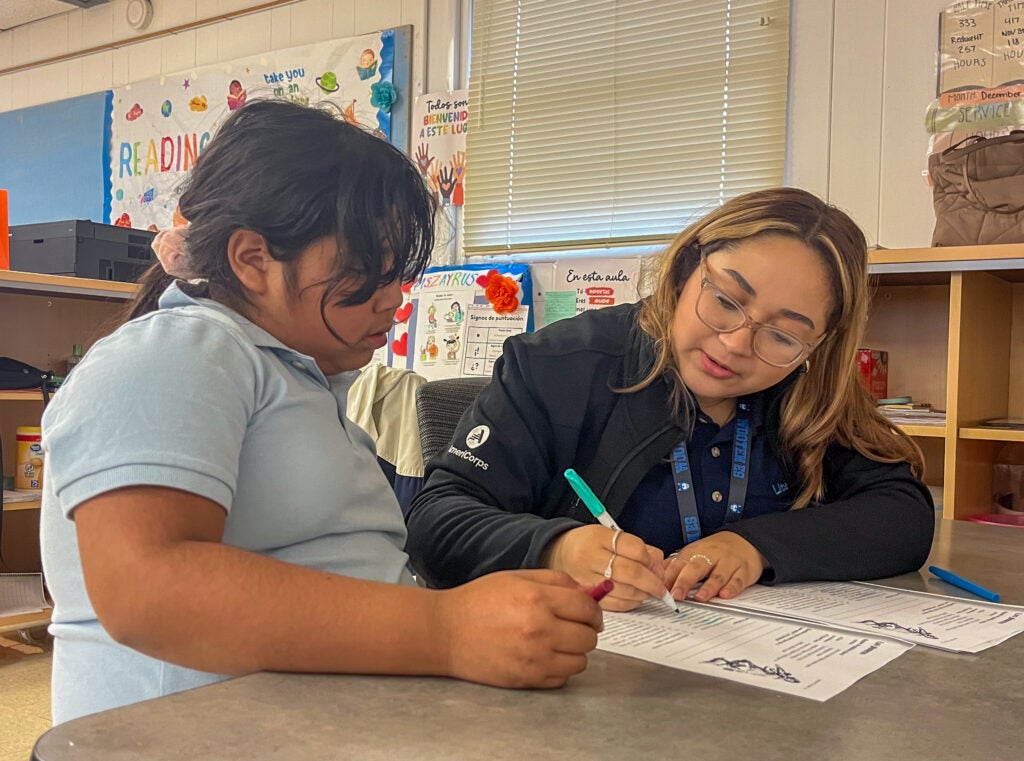By Fatima Diaz, 2023–2025 Spanish Literacy Tutor
Working as a bilingual tutor for Literacy First was an incredibly transformative experience. It reshaped the way I think about education, language, and even how I want to raise my own children in the future. This role not only allowed me to give back to students facing similar challenges to those I experienced as a child but also deepened my understanding of the complex relationship between language and learning.
Growing up, I needed extra support to learn how to read, and I was fortunate to receive that help through a tutoring program. I remember what it felt like to struggle with reading, to feel behind, and to rely on the patience and encouragement of tutors who believed in me. Now, standing on the other side of that experience, I realize just how valuable that support truly was. Without it, I don’t know how long it would have taken me to build confidence in my reading abilities. That’s why I am so passionate about the work I do now—I see myself in the students I teach, and I understand just how much of a difference even small moments of encouragement can make.
One thing I’ve observed in this role is how language affects literacy development. Many of my students speak a mix of Spanish and English—Spanglish—at home, but during their tutoring sessions, they typically concentrate on strengthening their skills in their dominant language. This creates a unique challenge for some students, as they may prefer different languages for verbal and written communication, or they may even feel more comfortable translanguaging (switching between multiple languages). Navigating between home and school language expectations can be confusing or frustrating for some students.

To bridge this gap, I communicate with my students in both languages, sometimes using Spanglish, if that is what a student prefers. While lessons are still focused on Spanish literacy, this approach allows them to feel more connected and comfortable, which makes learning less intimidating. I’ve found that when students feel safe and understood, they are more willing to participate, take risks, and push through challenges. By acknowledging and respecting their linguistic background, I can better support their growth rather than forcing them to abandon the way they naturally communicate.
This experience has made me think a lot about the kind of parent I want to be in the future. I’ve realized that I want my children to grow up in a home where their language skills—whether in English, Spanish, or a mix of both—are nurtured rather than restricted. I don’t want them to feel like one language is more “correct” than another. Instead, I want to encourage bilingualism in a way that feels natural and empowering.
Tutoring has also reinforced my belief that patience and encouragement are key to learning. So many of my students came into the program with low confidence, believing that they are not smart enough or capable enough to succeed. But when given the right support and a safe environment to practice, they started to see their own progress. Their confidence grew, and with it, their ability to take on new challenges. This observation made me reflect on how I want to approach learning with my future children—I want to create a space where mistakes are not feared but embraced as part of the learning process.
Ultimately, tutoring has given me a deeper appreciation for the role of educators, mentors, and parents in shaping a child’s relationship with learning. It has reminded me of my own struggles and successes, reinforcing the idea that no child should feel alone in their journey. As I continue this work, I carry with me not just the responsibility of helping students succeed but also lessons that will shape how I raise my own family one day. I now understand that education is not just about teaching skills—it’s about building confidence, creating connections, and making students feel seen and valued. And that is a lesson I will take with me far beyond the classroom.

